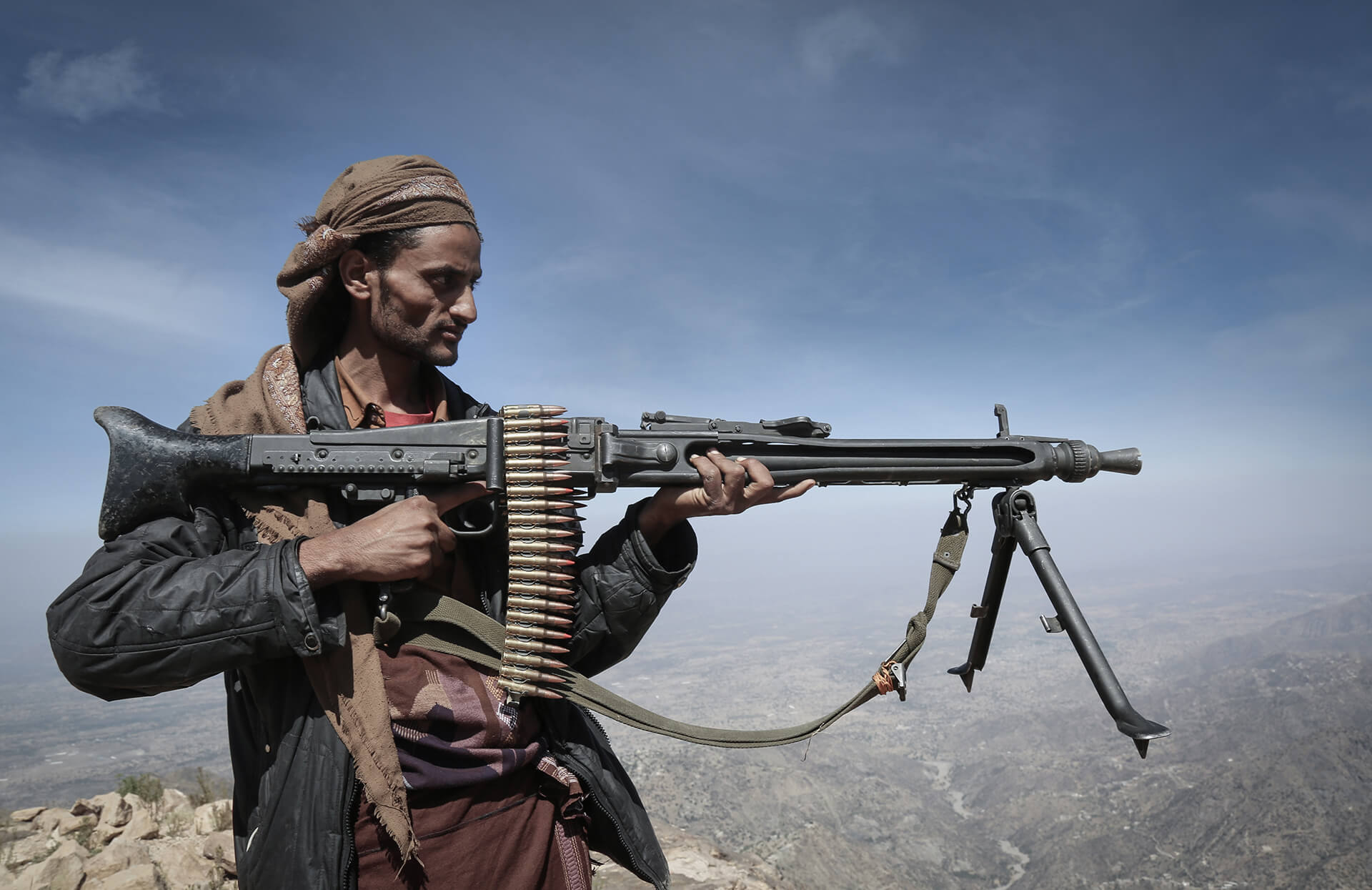The Internationally Recognized Government (IRG) of Yemen has designated Houthi rebels as a terror group. In an unprecedented move, the National Defense Council (NDC) released its official statement following drone strikes claimed by the Sana’a-based rebels on Rudhum terminal and al-Dhaba port. The operations launched by Houthi rebels between October 15 to October 21 were the first strikes since the UN-brokered truce expired on October 2.
As the truce expired, Houthi military spokesman, General Yahya al-Sareh, and Houthi delegate, Mohammed Abd al-Salam, published statements threatening foreign oil companies and vessels operating in Yemen. The threats were in line with Houthi demands for a larger share of oil revenue as part of failed negotiations with UN Special Envoy Hans Grundberg to extend the six month long ceasefire. The incidents temporarily suspended production and exports. Only a week later, Cal Valley Petroleum declared force majeure and suspended all work starting November 1.
Who Are the Houthis?
After eight years of conflict between the IRG and Houthi rebels, the listing by the NDC came a week after Saudi Arabia urged the UN Security Council (UNSC) “to designate Houthis as terrorists.” Calls at the Security Council by Saudi Arabia aimed to expand on language used in UNSC Resolution 2624 (2022), where at the urging of the UAE the Council referred to Houthis as a “terrorist group.” These efforts by members of the Arab coalition to restore legitimacy aim to pressure the US and the EU to officially designate the Iran-backed militia a “terrorist organization.”
An Increasing Threat
The accuracy and velocity of the latest drone strikes by Houthis are an indication of increasing capabilities, including intelligence resources. This should not come as a surprise following months of recruitment and deployment of troops and weapons by Houthis, who organized a dozen military parades throughout northern Yemen during the period of the UN-brokered truce.Their recent choice of targets also indicates a clear shift in strategy since the truce expired. Prior to the start of the truce in April 2022, Houthis focused on cross-border strikes against targets in Saudi Arabia and the UAE. The shift to oil facilities within Yemen fits the Houthi narrative, calling the IRG mercenaries and the coalition members “thieves”, looting Yemen’s oil.
Demands by Houthis for a bigger share of oil revenue appears to extend from decreasing sources of income this year. The UN donors conference in March 2022 only delivered $1.3 billion from the requested $4.2 billion. This has affected humanitarian operations across Houthi-held territory. It was a major blow from the rebels who profit from the entire cycle: from collecting taxes at the port, to the control of ground transport and warehousing, to the local civil society organizations in charge of distribution of aid, and now to the banks and foreign exchange shops. The decrease in the flow of aid has affected the entire cycle, which also maintains a complex patronage of networks, sustaining the elite down to tribal levies.
US Sanctions Miss the Mark in Yemen
By targeting the Rudhum terminal at al-Nushayma, Shabwa, the rebels also sent a message to the Southern Transitional Council (STC), whose ally is now governor of Shabwa province. The aim is to prevent the STC from profiting off oil exports. In al-Dhaba port, near al-Rayyan airport, the drone strikes on the South Korean Nissos Kea vessel were called a warning by Houthis to foreign companies, more specifically, those that are linked to members of the coalition. Al-Masirah media reported Houthis used Samad-3 drones for the strikes in al-Dhaba.
New Targets
While Houthi drone strikes within Yemeni territory are not new, the locations and distance show a shift amid a new balance of power. Aden has been a target along with nearby military bases and high-ranking security officers, but the reach to facilities along the coastlines of Hadramawt and Shabwa with such accuracy represent new threats to rising powers like the Southern Transitional Council (STC). The stalemate in al-Dhale province between Houthis and pro-STC forces remains months after southern Giants Brigades expelled Houthis from Bayhan, Shabwa.
In January 2022, the clashes along Shabwa’s western mountains delivered the first major victory over the Houthis, reversing territorial gains beyond the old north-south divide. A fractured national army and a weakened al-Islah party had placed pro-STC forces at the forefront in the fight against Houthis. This new balance comes with a high price for southerners, and Houthi strikes on oil facilities in southern provinces aim at dragging STC forces into direct confrontations along new frontlines.
Houthis know southern forces are stretched along multiple fronts. Security Belt Forces continue to advance across Abyan against terrorist elements, while Amalaqa and Shabwa Defense Forces cleanse Shabwa of rebellious elements that oppose governor Awad al-Awlaqi. Attacks on vital energy infrastructure come at a minimal risk and cost for Houthis. They are gambling on either instigating a wider response by the National Army or the coalition, which leads to a return of cross-border strikes on Saudi Arabia and the UAE, or a mobilization by southern forces that are already stretched thin.
The government of Yemen echoed members of the coalition and has called for the international community to strengthen its stance on Houthis to designate the militia a terror group. Statements by western governments following the attack on al-Dhaba ports have also come under criticism for their weak stance since the truce expired. In absence of compromise on a new ceasefire threatens an escalation across battlefronts under new conditions with higher stakes for warring parties.
[Charlize Cheesman edited this article]
The views expressed in this article are the author’s own and do not necessarily reflect Fair Observer’s editorial policy.
Support Fair Observer
We rely on your support for our independence, diversity and quality.
For more than 10 years, Fair Observer has been free, fair and independent. No billionaire owns us, no advertisers control us. We are a reader-supported nonprofit. Unlike many other publications, we keep our content free for readers regardless of where they live or whether they can afford to pay. We have no paywalls and no ads.
In the post-truth era of fake news, echo chambers and filter bubbles, we publish a plurality of perspectives from around the world. Anyone can publish with us, but everyone goes through a rigorous editorial process. So, you get fact-checked, well-reasoned content instead of noise.
We publish 2,500+ voices from 90+ countries. We also conduct education and training programs
on subjects ranging from digital media and journalism to writing and critical thinking. This
doesn’t come cheap. Servers, editors, trainers and web developers cost
money.
Please consider supporting us on a regular basis as a recurring donor or a
sustaining member.
Will you support FO’s journalism?
We rely on your support for our independence, diversity and quality.







Comment